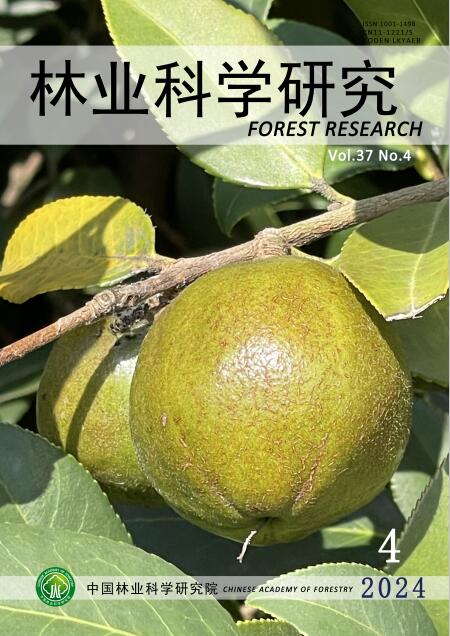Economics of Santalum album L. Cultivation Under Semiarid Tropics of Karnataka, India
Q4 Agricultural and Biological Sciences
引用次数: 4
Abstract
Sandalwood (Santalum album L., Family: Santalaceae) is one of the most important economic tree species harvested mainly for its heartwood and oil. Sandalwood referred to as “Chandana” in Sanskrit and is commercially known as “East Indian Sandalwood” and its essential oil known as “East Indian Sandalwood Oil”. The oil extracted from the sandalwood trees are considered to be unique and is preferred over other regions for the preparations of perfumes, formulations, flavors, cosmetics, toiletries, beauty aids and medicines. Despite the policy amendments and government support to cultivate sandalwood on farm lands, there is lot of skepticism on the economic aspect of sandalwood cultivation especially due to long gestation period in accruing returns and high investment required for protection. Study on economic viability of sandalwood cultivation would be extremely useful to different stakeholders like farmers to know the relative profitability of sandalwood cultivation. Also, for financial institutions involved in advancing farm loans to sandalwood cultivators, the economics of cultivation at discounted rates is an essential aspect. For calculation of cost of raising sandalwood plantation, information on various inputs and resources at different stages of cultivation, harvesting, processing, transportation and marketing was collected from cultivators. Data related to recent price of sandalwood heartwood and sapwood was collected from Karnataka Soaps and Detergent Limited (KSDL). For financial analysis indicator like Net Present Value (NPV), Benefit-cost ratio (B/C ratio), Internal Rate of Return (IRR), Equivalent Annual Income (EAI) and Land Expectation Value (LEV) were used. Sandalwood cultivated in combination with red-gram showed B/C ratio of 1.93 and IRR of 29%, compared to growing sandalwood alone with B/C ratio and IRR values of 2.58 and 26% respectively. Though the inter-cultivation (sandalwood+tur dal) have slightly lower NPV, B/C ratio and LEV, but higher EAI (annual NVP) when compared to pure sandalwood plantations however, the possibility of yielding Pigeon pea/Tur dal/Red gram (Cajanus cajan (L.) Millsp.) in inter-cultivation makes farmers comparatively more attractive as it gives some income every year.印度卡纳塔克邦半干旱热带地区的种植
檀香(Santalum album L.,科:檀香科)是最重要的经济树种之一,主要收获其心材和油。檀香在梵语中被称为“Chandana”,商业上被称为“东印度檀香”,其精油被称为“东印度檀香油”。从檀香木树中提取的油被认为是独特的,比其他地区更适合用于香水、配方、香料、化妆品、洗漱用品、美容辅助和药物的制备。尽管政策修订和政府支持在农田种植檀香,但对檀香种植的经济方面仍有很多怀疑,特别是由于积累回报的酝酿期长,以及保护所需的高投资。研究檀香种植的经济可行性对不同的利益相关者(如农民)了解檀香种植的相对盈利能力非常有用。此外,对于参与向檀香种植者提供农业贷款的金融机构来说,以贴现率进行种植的经济学是一个重要方面。为了计算檀香种植的成本,从栽培者那里收集了栽培、收获、加工、运输和销售不同阶段的各种投入和资源信息。有关檀香心材和边材最近价格的数据是从卡纳塔克肥皂和洗涤剂有限公司(KSDL)收集的。财务分析采用净现值(NPV)、效益成本比(B/C ratio)、内部收益率(IRR)、等效年收入(EAI)和土地预期价值(LEV)等指标。与单独栽培相比,与红革组合栽培的檀香的B/C比为1.93,IRR为29%,其B/C比和IRR分别为2.58和26%。虽然与纯檀香人工林相比,间作(檀香+扁豆)的净现值(NPV)、B/C比和LEV略低,但EAI(年NVP)较高,但生产鹰嘴豆/扁豆/红克(Cajanus cajan (L.))的可能性较大。由于每年都有一定的收入,因此对农民的吸引力相对更大。
本文章由计算机程序翻译,如有差异,请以英文原文为准。
求助全文
约1分钟内获得全文
求助全文
来源期刊

林业科学研究
Environmental Science-Ecology
CiteScore
0.90
自引率
0.00%
发文量
4834
期刊介绍:
Forestry Research is a comprehensive academic journal of forestry science organized by the Chinese Academy of Forestry. The main task is to reflect the latest research results, academic papers and research reports, scientific and technological developments and information on forestry science mainly organized by the Chinese Academy of Forestry, to promote academic exchanges at home and abroad, to carry out academic discussions, to flourish forestry science, and to better serve China's forestry construction.
The main contents are: forest seeds, seedling afforestation, forest plants, forest genetic breeding, tree physiology and biochemistry, forest insects, resource insects, forest pathology, forest microorganisms, forest birds and animals, forest soil, forest ecology, forest management, forest manager, forestry remote sensing, forestry biotechnology and other new technologies, new methods, and to increase the development strategy of forestry, the trend of development of disciplines, technology policies and strategies, etc., and to increase the forestry development strategy, the trend of development of disciplines, technology policies and strategies. It is suitable for scientists and technicians of forestry and related disciplines, teachers and students of colleges and universities, leaders and managers, and grassroots forestry workers.
 求助内容:
求助内容: 应助结果提醒方式:
应助结果提醒方式:


